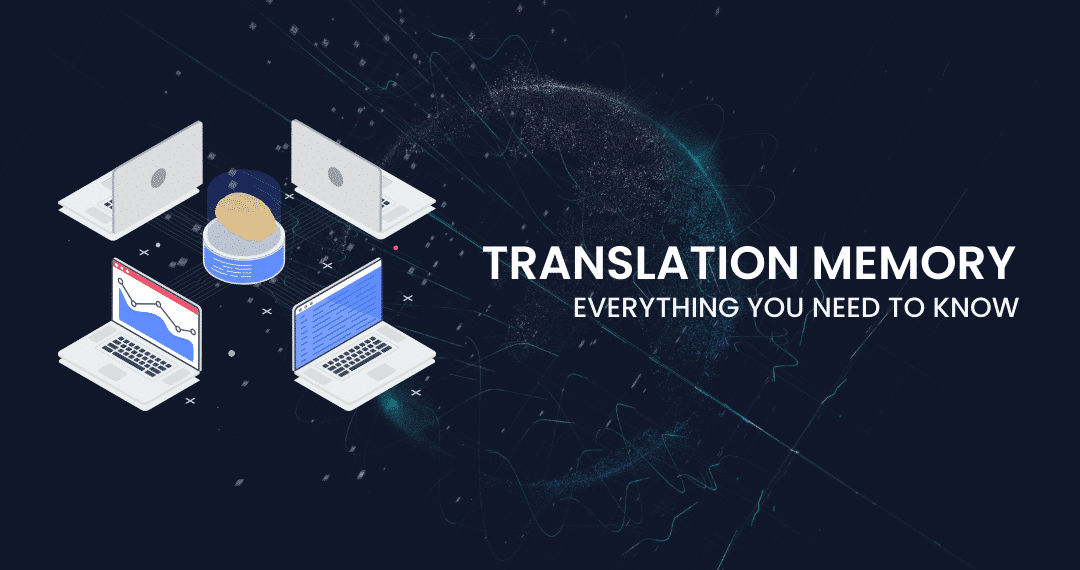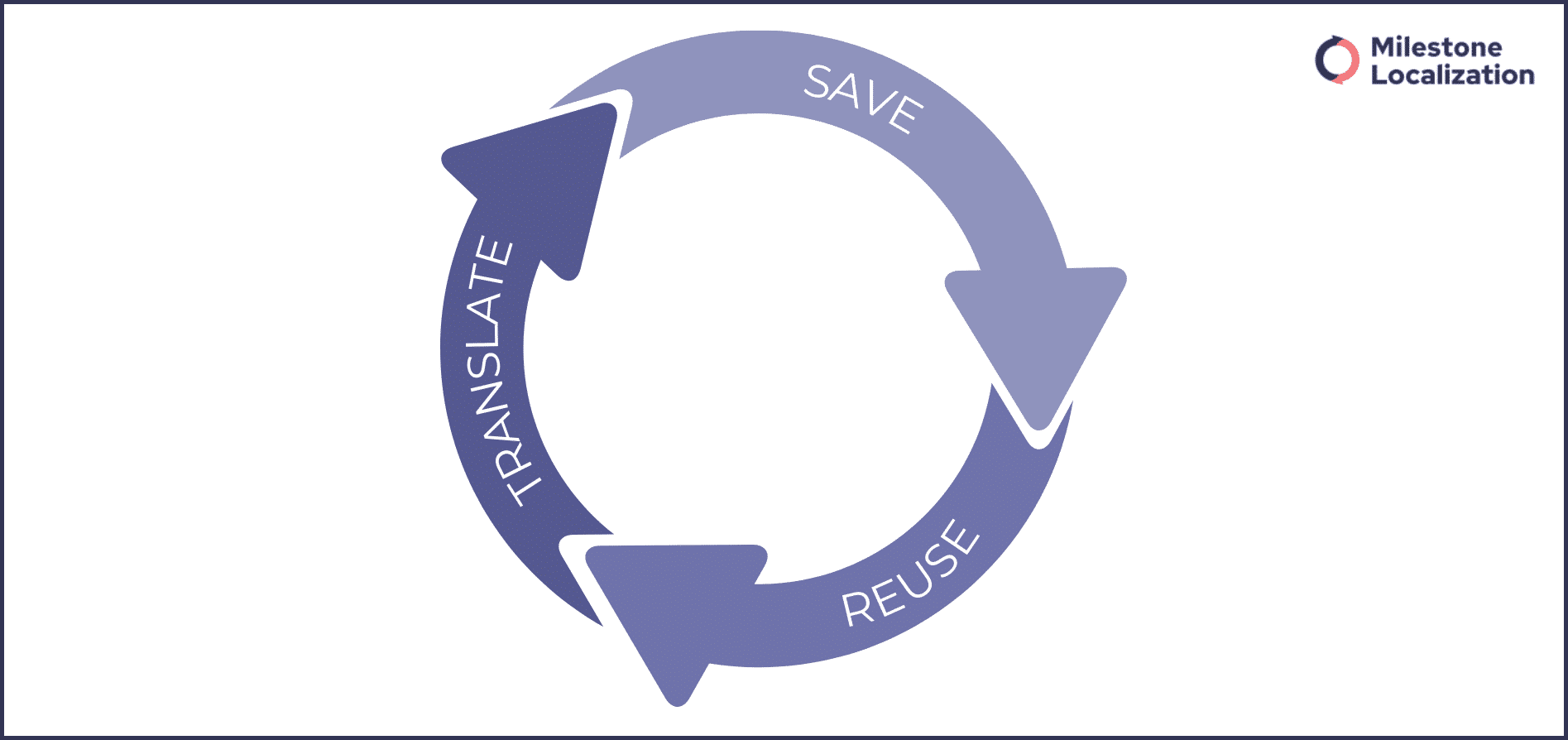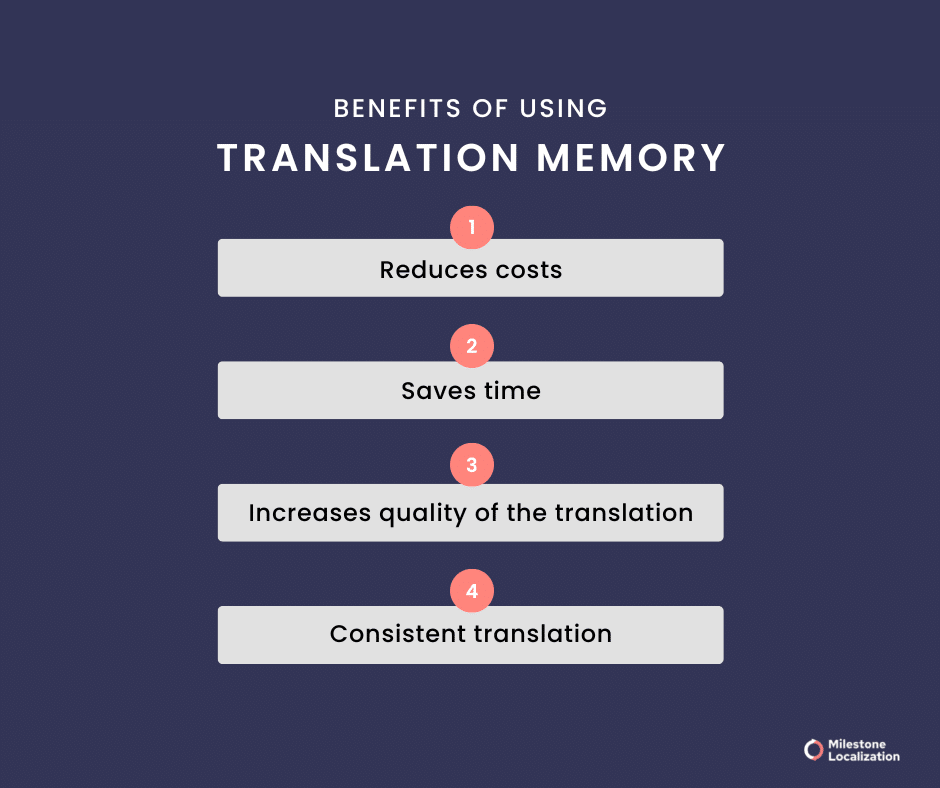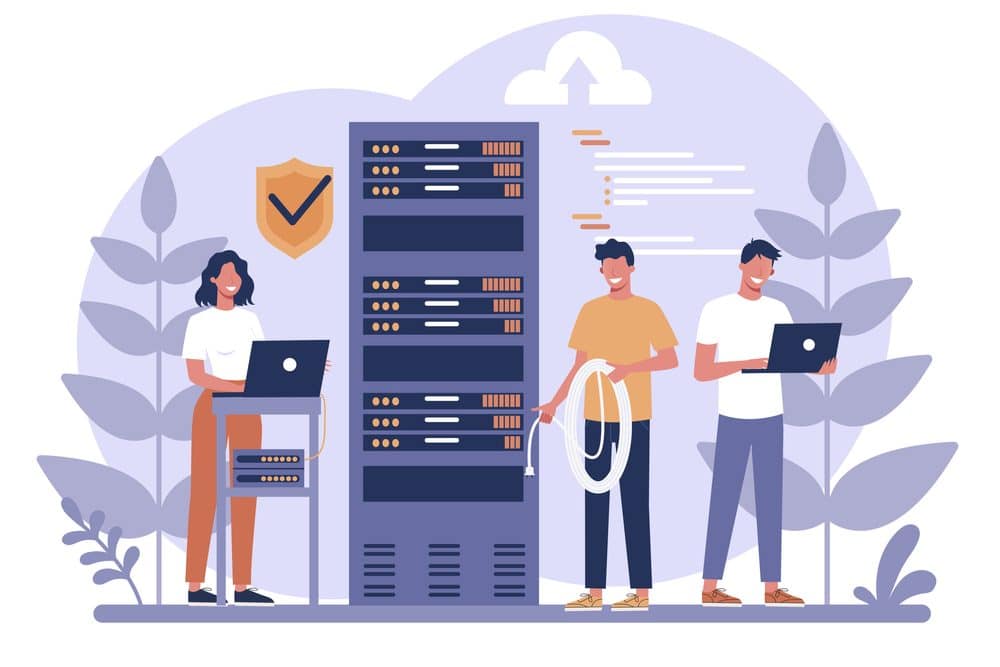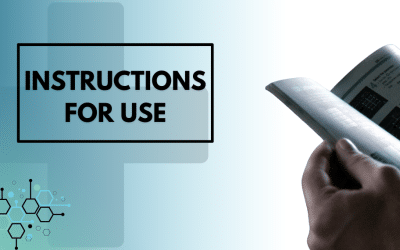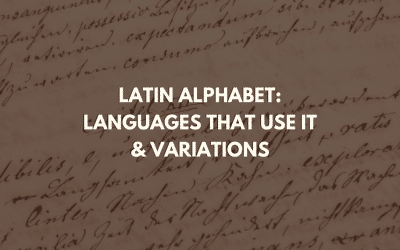What is translation memory? Is it the same as Machine Translation? and why is it considered to be a powerful tool when it comes to localization?
We live in a fast-paced, globalized world and translators are an essential piece of the puzzle. But how do they manage to keep up with all the work and the ever-increasing demands for faster, more efficient workflows?
One of their secret weapons is Translation Memory (TM) – a software that reuses old translations.
You might not be surprised that technology and computers have found their way into the lives of translators. These types of software cannot (and will never) replace human translators.
However, they aid immensely the work process by taking up repetitive, time-consuming tasks.
If you are not sure if Translation Memory is the right choice for you, keep reading!
In this blog, you will learn everything you need to know about this technology.
What is Translation Memory (TM)?
Translation Memory (TM) is a database that stores segments such as sentences or, in some cases, paragraphs that have been already translated.
Each segment gets registered as a separate entry in the system. The segments are parallel – on one side is the original or the “source” segment and on the other side – the translation also known as the “target” segment.
A pair of a source and target segment forms a “translation unit” (TU).
In the image above, the source segment is in English and the target segment is in Hindi. There are two segments, forming two translation units.
When the source segment appears again in the same form, TM automatically translates it using the saved TU.
It should be made clear that Translation Memories are not used on their own. This type of software usually gets integrated into CAT tools.
Also Read: CAT Tool -Features & Benefits- Why Every LSP & Translator Should Use One
Difference between Translation Memory and Machine Translation
Translation Memory and Machine Translation are not the same things!
While most translators widely implement these two technologies, some people tend to confuse them.
So here are the main differences:
- Machine Translation translates automatically and it will always provide a suggestion.
TM, on the other hand, gives a suggestion only when there is a match beyond a certain threshold. - MT utilizes neural networks which means that it “learns” and, hypothetically, can translate unforeseen words.
TM only works with previous translations. - MT works on sub-word level – it focuses on the combination of characters and letters and does not consider context and format.
TM takes into account aspects such as context (the segments before and after) as well as the format of the text (font, images, colors, etc.)
It should highlight that Translation Memory can cooperate with MT. Hypothetically this implementation proceeds as follows:
The source segment gets initially passed through the TM and if there is no match, the MT takes up the analysis and provides the translator with a suggestion.
Also Read – AI Language Translation: Can AI Replace Human Translators?
How does translation memory work?
TM does not operate on its own – it should be integrated into CAT tools. Based on previous translations stored in the TM, the system offers suggestions.
Depending on the similarity of the source and target segments, the system provides matches with different percentages:
- 100% matches – the segments are completely identical.
- 101% matches – the segments as well as their contexts are completely identical. This means that the segment before and the segment after, aka the “context”, are identical.
- Fuzzy matches (0-99%) – the segments are not entirely identical (the higher the percentage of the fuzzy match is, the greater the similarity between the segments).
Translators tend to ignore matches below 70% since they are generally not useful.
Why Translation Memory is beneficial?
TM is not used to replace the human translator, but rather to speed up the translation process by taking up some tasks. While TM aids the work of the translators, it can be beneficial to clients as well!
Also read: Emerging Trends in Translation Technology
Here is a full list of all the benefits which MT offers:
- Seeps up the translation: We tend to write in patterns and MT utilizes this by saving previous translations so that they can reuse later.
- Reduces costs: Since translators have less to translate, the client has to pay less.
- Saves time: Repeated segments get automatically translated saving the translator and clients time.
- Increases quality: TM stores the correct phrases and sentences and this can be extremely useful when more than one translator works on the same project.
- Consistent Translation: When the same segments have to be translated over and over again, TM helps the translators to maintain consistency throughout the whole text.
At Milestone Localization, we usually only charge our clients 25% of the per word rate for repeated segments. This leads to significant cost savings- especially for a big project.
Also read: Top Qualities Of A Good Translation
Reduce your localization costs up to 30%
6 ridiculously simple tried and tested ways to reduce localization Costs on your next localization project. Save time, and money and improve translation quality with these dead simple but effective strategies.
For what types of texts is it best to use translation memory?
Translation Memory is extremely useful for:
- highly repetitive texts such as legal documents, technical manuals, guides, and contracts.
- translating an upgraded version of a previously translated document.
TM is considered to be less useful for literary texts since there is not much repetition. However, some translators implement TM even when working on non-repetitive texts since the system provides suggestions which can be a good starting point.
Also read: Translation, Transcreation, Transliteration: What Is The Difference?
What you should know about maintaining TM?
Translation Memory brings about numerous benefits for both translators and customers, however, set up properly in order to provide the best results possible.
What’s more, once set up correctly, the system should be maintained on a regular basis for it to continue to operate properly.
But how to set up a TM? Generally, you can use the TM in reading or writing mode. The latter includes the option of correcting previously-stored translations.
You can create a “master” TM in read-only mode in which your language service provider can save up the translations which considered “high-quality”. This means they do not contain any mistakes which might deteriorate the quality of the output.
That’s done by professional linguists who will either correct or remove segments of questionable quality. This process is often referred to as “cleaning”.
If the TM contains mistakes, using it will be counter-productive. It will lead to the same mistake repeated everywhere. So you need to be confident that the translation is accurate before saving it to TM
It is, therefore, preferable to opt for a trusted language service provider who works with professional, well-trained linguists.
At our agency, we build Translation Memories subject-wise for each language pair. This ensures the quality and contextual relevancy of the TM. Our linguists regularly check the TM and suggest changes where required.
Also Read: 7 Reasons To Work With a Translation Company on Your Next Project
Why should you invest in TM?
Translation Memory reported having increased the productivity of translators between 15% and 90%. Moreover, another study showed that the average increase in productivity is 36%.
Since the system allows translators to reuse old translations, they can work on longer texts without exceeding their normal working hours.
Translation memory not only saves time and money but also improves the quality and consistency of a translation. To maintain accuracy and quality in big localization projects, translation memory is absolutely necessary.
Our clients see a saving of between 24-38% on big projects because we can leverage old translations for them.
Also read: Localization & Translation Costs: Breakdown As Factors Involved
To conclude
Translation Memory has become an essential tool for every translator who values efficiency. This system increases productivity and reduces translation costs which renders it a “win-win” situation for both translators and clients.
If you have a regular translation requirement, make sure you only work with an agency that uses the latest technology to leverage TM.
If not, you’ll lose time, money, and quality on your translation projects.
Also read: Top Translation Companies In The UK: How To Choose The Best One?
Get Your Content Translated in the language of your choice
Milestone helps you seamlessly localize your website, products, and services into Filipino languages for more reach, better conversions, and greater sales.

